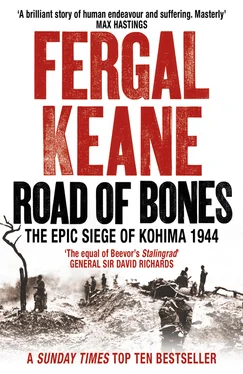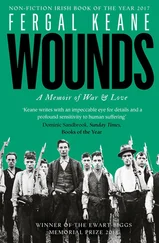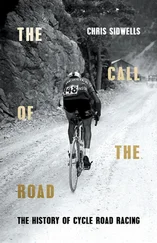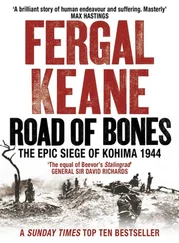To lunch they go at half past one –
Blast me, old chap, the day’s half done.
They lunch and talk and fight Jap,
And now it’s time to take a nap.
The British in Asia were widely caricatured as blimps and buffoons, selfish and self-satisfied, borne aloft on the suffering of millions of brown and yellow subjects. Roosevelt himself was determined that victory in the Far East would not lead to a reimposition of the colonial status quo. The Atlantic Charter, which was signed at the Arcadia conference held by Churchill and Roosevelt in December 1941–January 1942, committed the allies to ensuring ‘the right of all peoples to choose the form of government under which they will live’. The Americans believed this included India and the rest of the British empire, as well as the French and Dutch colonial possessions occupied by the Japanese. Churchill emphatically did not. *
An aggravated Churchill wired his deputy, Clement Attlee, in London about ‘the danger of raising the constitutional issue in India at a moment when the enemy is on the frontier’. But he was a shrewd enough politician to realise that preserving the Raj in the face of American opposition demanded a serious military effort in South-East Asia. Limited resources would always make Europe the priority and would ensure that Britain was the junior partner in the Far East. But if the British possessions in South-East Asia were still in enemy hands by the time the Americans defeated Japan, as they surely would be, how could Churchill make any claims for the recovery of territory in the post-war negotiations? * Fighting and defeating the Japanese in Burma would not alter the outcome of the world war, but it would give Churchill valuable political capital.
The British and Americans also had very different strategic aims. Churchill believed British and Indian forces should aim at driving the Japanese out of Rangoon as an initial step towards the recovery of British territory in Singapore and Malaya. The Americans saw the campaign in markedly different terms. China was the priority and British resources should be used to drive the Japanese out of northern Burma in order to secure the supply route to Chiang Kai-shek. † Defeat the Japanese in China, the Americans reasoned, and they would gain a ‘back door’ to Tokyo, airfields from which to launch bombing raids against the home islands of Japan. For a man of ruthless political calculation in so many other regards, Roosevelt was obstinately myopic when it came to China. The China he imagined bore no relation to the corrupt and chaotic world of reality. In November 1943 he wrote of the ‘triumph of having got the four hundred and twenty million Chinese in on the Allied side. This will be very useful twenty-five or fifty years hence, even though China cannot contribute much military or naval support at the moment.’
General Slim would wrestle with the pressures caused by high-level disagreements as he planned his campaign to retake Burma and throughout the battles to come. But his task would be made infinitely easier by the creation of a new command structure, and notably by his new superior, a charismatic and controversial aristocrat. The initial omens were not good. Lord Louis Mountbatten had planned only one military operation of note, two years before, and it had ended in disaster. As Chief of Combined Operations, he had directed the disastrous Dieppe raid of 1942 in which 3,623 Canadian troops were killed, wounded or captured. In August 1943 he was appointed to head the new South-East Asia Command (SEAC). Mountbatten was only forty-three years old, a Navy captain with the acting rank of admiral, and first cousin to the king. He was regarded by many senior military figures as a self-promoting dilettante who had won his position through Churchill’s weakness for those who promised dashing victories, and through his royal connections. The CIGS, General Alan Brooke, wrote of being driven ‘completely to desperation’ by Mountbatten, who was ‘quite irresponsible, suffers from the most desperate illogical brain, always producing red herrings’.
But as supreme commander Mountbatten would prove a success. He brought the glamour of royalty to the forlorn front lines of South-East Asia, even if that meant shipping in a barber from London to take care of his tonsorial needs, and he infused the troops with a sense that their battles mattered. His skill in negotiating the often fractious relationship with the Americans helped Slim beyond measure. The American president addressed Mountbatten with the familiar ‘Dickie’, a habit formed when Mountbatten and Edwina stayed with the Roosevelts a few months before Pearl Harbor. After Mountbatten’s accession to SEAC, Roosevelt had gushed to him, ‘for the first time in two years I have confidence in the personality problems in the China and Burma fields – and you personally are largely responsible for this’. He added affectionately, and perhaps with a wary sense of Dickie’s fondness for the limelight, ‘Be a good boy.’
What emerged in South-East Asia was one of the most important partnerships of the war: in Mountbatten, an aristocratic supreme commander who navigated Anglo-American rivalry with skill; and in Slim, the down-to-earth son of a Birmingham shopkeeper, who made war according to a gospel of patience, shrewdness and relentless attention to detail.
A massive reorganisation of the supply, training and medical systems was set in motion. With half a million men under arms in the subcontinent the demands for food and equipment – everything from fresh vegetables to .303 bullets for rifles – had placed an impossible strain on the pre-war colonial infrastructure. Ports, roads and airfields were all upgraded. More than 50,000 labourers were sent to improve the main road to Burma, which passed through Kohima to Imphal. * The tea-planters of Assam provided half of the labour force. By 1943 Indian factories and farmers were producing more goods for the war effort than Australia, New Zealand and Canada put together.
Rations had been a constant source of complaint from the men, with the ‘staple meal … a bar of dehydrated goat meat looking like a bar of tobacco and when boiled up smelling like an ancient billy-goat’. Now Slim’s head of administration, the aptly nicknamed Major General Alf ‘The Grocer’ Snelling, set out to revolutionise the quality and delivery of the food. He flew in some Chinese to start a duck farm which would produce eggs and he sent his men to India to procure live goats and sheep. Later Snelling would establish a jungle farm to keep up a steady supply of fresh food to the front-line forces, and he would perfect the art of dropping supplies to surrounded troops, painstakingly calculating and packing the supply needs of an entire division. When Slim was told that he could not get adequate supplies of parachutes in India he decided it was ‘useless to hope for supplies from home. We were bottom of the priority list there, for parachutes as for everything else.’ So he called in the ever-dependable Snelling and a few of his officers and told them that if proper silk parachutes were not available they should find a substitute. They began a search of the paper mills and jute factories of Calcutta, which ended with the development of a ‘parajute’, made entirely of jute, which was 85 per cent as effective as the normal parachutes. They were not about to drop men or fragile equipment from the air with them, but for food and ammunition they would be invaluable. Slim picked Colonel ‘Atte’ Persse, a man with a reputation for ‘making himself a nuisance to all and sundry until he got what he wanted’, to make sure tanks reached the Arakan in time for his offensive. Stone was shipped in from Madras to turn some of the jungle tracks into routes along which tanks could operate.
The most important change took place in the air. At the height of the retreat in 1942 the army could call on only four airfields with all-weather runways and up-to-date facilities. By the following November, thanks to a massive programme of American-sponsored construction, that number had increased tenfold. * The existing fleet of Mohawk fighters was reinforced with Hurricanes, Beaufighters and Spitfires. From the point of view of the fighting man on the ground, one of the fighters’ most important roles was to protect the transport planes that brought him food and ammunition.
Читать дальше












